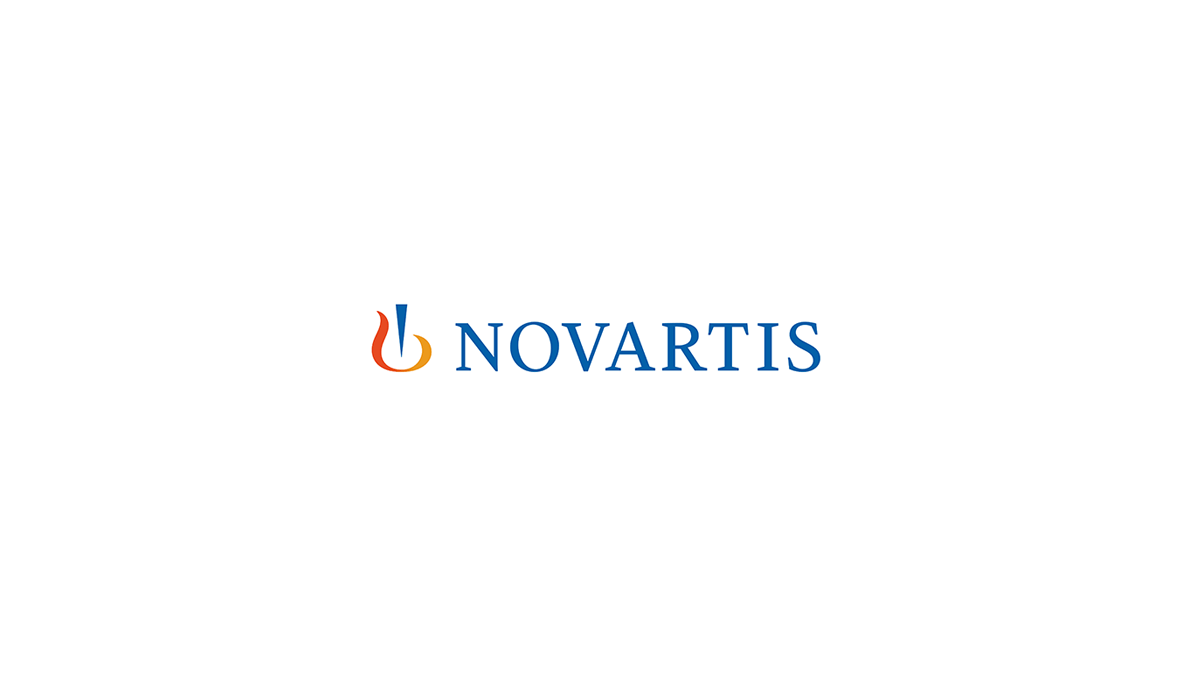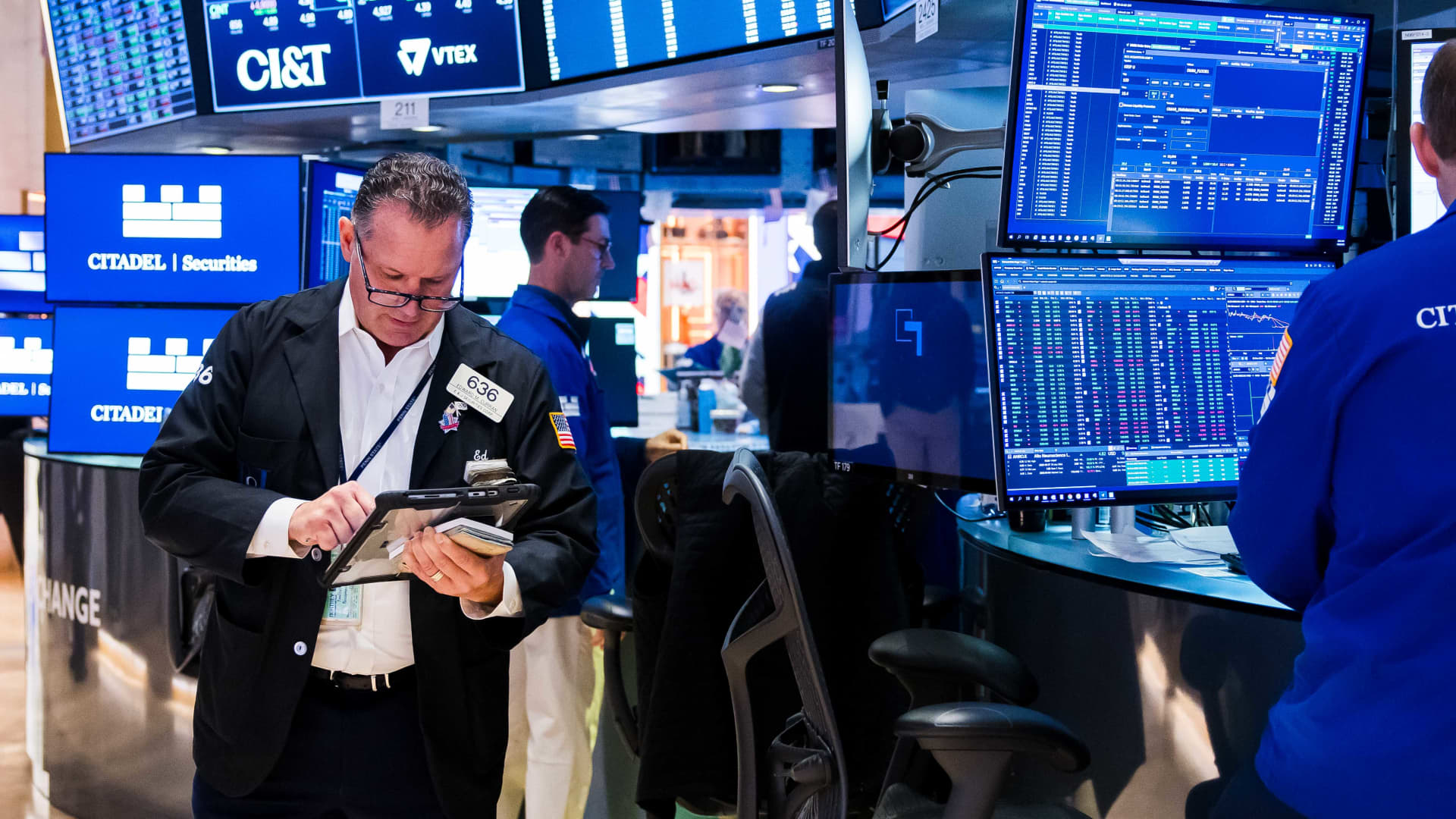Concerns about an artificial intelligence bubble are on the rise — but many investors are willing to put them to one side in the quest for mounting returns. In the most recent iteration of Bank of America’s Global Fund Managers Survey, a potential AI bubble was identified as the biggest tail risk to markets. The survey polled 166 fund managers, who collectively oversee assets worth $400 billion, between Oct. 3 and 9 — a third of whom named an AI equity bubble as the top threat, up from around one in 10 a month earlier. It marked the first time in the history of the monthly survey that an AI bubble was named as the biggest risk to markets. With capital pouring into AI and AI-adjacent companies , stocks have boomed this year — but increasingly, major institutions and influential figures are issuing warnings about soaring valuations. More than 50% of fund managers told BoA this month that they already believe AI stocks are in a bubble, while a record 60% of those polled said global stocks are overvalued. One month earlier, 41% of respondents had said stocks were in a bubble. However, those concerns weren’t strong enough to override a general sense of optimism. Bank of America’s strategists noted in a report on the findings that “positioning shows investors see returns outweighing risks,” as fund managers were the most net overweight on stocks since January — before the volatility sparked by U.S. President Donald Trump’s so-called “liberation day” announcements. Emerging markets became the preferred region for global equity investors in October, according to the BoA survey, while fund managers also remained overweight on European stocks. Banks were the most overweighted sector in Europe, with just 4% of those polled saying they see downside ahead for the industry — even after a first half of bumper returns . “AI-bubble tail risks [are] not enough to dampen optimism,” BoA strategists said in the report on the European survey findings. “Concerns around an AI bubble have increased, rising to the #1 market tail risk, but not by enough to dampen a more positive equity market outlook overall.” ‘Era defining’ Lewis Grant, senior portfolio manager for global equities at Federated Hermes, told CNBC that this year’s stock rally “has been primarily sentiment driven, with fundamentals an afterthought.” “FOMO [fear of missing out] challenges the resolve of even the most disciplined, and there are plenty of reasons to argue that this time is different,” Grant said. “AI as a technology is era defining, with the associated market rally led by established, well capitalised, mega-cap companies. The story is compelling, but that is only part of an investment process. Fundamentals and valuations can only be ignored for so long.” Grant added that although his team is bullish on the long-term investment case for AI, there were risks around investing in the space — and an intense focus on the tech could lead to other opportunities being missed. “Such intense capital expenditure, with payoffs uncertain in terms of quantum and timeframe, leave the AI rally vulnerable to sudden shifts in risk appetite,” he said. “We see opportunities in Europe as the industrial machine begins to turn, although admittedly that may take time to get into full swing and comes with its own set of potential challenges,” he said. Meanwhile, Victoria Fernandez, portfolio manager and chief market strategist at Crossmark Global Investments, told CNBC that a bubble could form around AI, even if it hadn’t already done so. “I don’t think we are in an AI bubble quite yet, although we could get there fairly easily depending on how valuations move,” Fernandez said. “We have seen herd behavior, as I can’t think of a single investor — institutional or retail — who doesn’t talk about AI stocks as part of any conversation around the markets. Where we are not seeing the bubble sign yet is at the earnings level — so far, companies have been able to support valuations with strong cash flow and solid profitability.”
Blog
-

Atlantic dolphins are dying much younger. Scientists sound the alarm
Common dolphins, among the most abundant marine mammals on Earth, are living significantly shorter lives in the North Atlantic. A new study published on October 10 in Conservation Letters reports that their lifespan has dropped sharply in recent…
Continue Reading
-

Large steel producers call on Khalid Hussain Magsi, discuss product quality and exports
A delegation of the Pakistan Association of Large Steel Producers called on Federal Minister for Industries and Production Khalid Hussain Magsi and discussed measures to promote quality and certified steel production in the country.
During the…
Continue Reading
-

Novartis Cosentyx® meets primary and all secondary endpoints in Phase III trial in patients with polymyalgia rheumatica (PMR)
- Cosentyx® (secukinumab) achieved statistically significant and clinically meaningful sustained remission vs placebo at Week 521
- Trial showed reduction in annual cumulative steroid dose vs placebo through Week 52; safety profile consistent with known profile of Cosentyx1
- Data highlight potential of Cosentyx as novel targeted PMR treatment, second most common inflammatory disease in adults ≥502, with limited options available
Basel, October 22, 2025 – Novartis today announced that Cosentyx® (secukinumab) met the primary endpoint and all secondary endpoints in the Phase III REPLENISH trial1. Cosentyx demonstrated statistically significant and clinically meaningful sustained remission vs placebo at Week 52 in adults with polymyalgia rheumatica (PMR)1. Data will be presented at an upcoming medical congress and submitted to health authorities in the first half of 2026.
“Polymyalgia rheumatica is an inflammatory rheumatic disease characterized by bilateral pain of the neck, shoulders, or hips, morning stiffness, and fatigue. It tends to flare and significantly impact patients’ quality of life,” said Angelika Jahreis, Global Head, Immunology Development, Novartis. “These results highlight the potential of Cosentyx to help patients achieve and sustain disease remission and reduce corticosteroids, which can lead to significant side effects in this typically elderly patient population. Today’s results represent another breakthrough in transforming care in rheumatology.”
A key secondary endpoint of the REPLENISH trial was adjusted annual cumulative steroid dose through Week 52. Other secondary measures included complete sustained remission at Week 52, and time until patients needed additional treatment3.
About REPLENISH trial
The REPLENISH trial (NCT05767034) is a global Phase III, multicenter, randomized, double-blind, placebo-controlled, parallel-group study conducted across 27 countries, evaluating the efficacy and safety of Cosentyx in patients with polymyalgia rheumatica (PMR). Patients were randomized into three treatment arms: Cosentyx 300mg, Cosentyx 150mg, or placebo, all in combination with a 24-week steroid taper regimen. The primary endpoint of the trial is to assess whether secukinumab 300mg sc. plus a 24-week steroid taper is superior to placebo plus a 24-week steroid taper in achieving sustained remission at Week 52. Key secondary endpoints include the proportion of patients achieving complete sustained remission at Week 52, the adjusted annual cumulative steroid dose, and the time to first use of escape or rescue treatment through Week 523.About Cosentyx (secukinumab)
Cosentyx is a fully human biologic that directly inhibits interleukin-17A, an important cytokine involved in the inflammation underlying multiple immune-mediated inflammatory diseases. It is approved for use in adults with psoriatic arthritis (PsA), moderate to severe plaque psoriasis (PsO), ankylosing spondylitis (AS), non-radiographic axial spondyloarthritis (nr-axSpA), and hidradenitis suppurativa (HS)4–6, as well as in pediatric patients with PsO, enthesitis-related arthritis (ERA), and juvenile psoriatic arthritis (JPsA)7–8.Cosentyx is supported by robust evidence and 10 years of real-world data demonstrating its long-term safety and sustained efficacy9–14. Since its launch in 2015, it has been used to treat more than 1.8 million patients worldwide and is now approved in over 100 countries9.About polymyalgia rheumatica (PMR)
Polymyalgia rheumatica (PMR) is the second most common inflammatory rheumatic disease in adults aged 50 years and older, typically characterized by acute pain and stiffness in the shoulders, neck, and hips2. Relapses are frequent, affecting up to 40% of patients in the first year15, and long-term steroid use, the standard of care, carries significant risks including osteoporosis and diabetes16. Beyond physical complications, PMR substantially impairs quality of life through pain, fatigue, restricted mobility, and fear of relapse17.Disclaimer
This press release contains forward-looking statements within the meaning of the United States Private Securities Litigation Reform Act of 1995. Forward-looking statements can generally be identified by words such as “potential,” “can,” “will,” “plan,” “may,” “could,” “would,” “expect,” “anticipate,” “look forward,” “believe,” “committed,” “investigational,” “pipeline,” “launch,” or similar terms, or by express or implied discussions regarding potential marketing approvals, new indications or labeling for the investigational or approved products described in this press release, or regarding potential future revenues from such products. You should not place undue reliance on these statements. Such forward-looking statements are based on our current beliefs and expectations regarding future events, and are subject to significant known and unknown risks and uncertainties. Should one or more of these risks or uncertainties materialize, or should underlying assumptions prove incorrect, actual results may vary materially from those set forth in the forward-looking statements. There can be no guarantee that the investigational or approved products described in this press release will be submitted or approved for sale or for any additional indications or labeling in any market, or at any particular time. Nor can there be any guarantee that such products will be commercially successful in the future. In particular, our expectations regarding such products could be affected by, among other things, the uncertainties inherent in research and development, including clinical trial results and additional analysis of existing clinical data; regulatory actions or delays or government regulation generally; global trends toward health care cost containment, including government, payor and general public pricing and reimbursement pressures and requirements for increased pricing transparency; our ability to obtain or maintain proprietary intellectual property protection; the particular prescribing preferences of physicians and patients; general political, economic and business conditions, including the effects of and efforts to mitigate pandemic diseases; safety, quality, data integrity or manufacturing issues; potential or actual data security and data privacy breaches, or disruptions of our information technology systems, and other risks and factors referred to in Novartis AG’s current Form 20-F on file with the US Securities and Exchange Commission. Novartis is providing the information in this press release as of this date and does not undertake any obligation to update any forward-looking statements contained in this press release as a result of new information, future events or otherwise.About Novartis
Novartis is an innovative medicines company. Every day, we work to reimagine medicine to improve and extend people’s lives so that patients, healthcare professionals and societies are empowered in the face of serious disease. Our medicines reach nearly 300 million people worldwide.Reimagine medicine with us: Visit us at https://www.novartis.com and connect with us on LinkedIn, Facebook, X/Twitter and Instagram.
References
- Novartis Data on File
- Espígol-Frigolé G, et al. Lancet. 2023;402(10411):1459–72.
- ClinicalTrials.gov. NCT05767034. [Last accessed: October 2025].
- Novartis Europharm Limited. Cosentyx® (secukinumab): Summary of Product Characteristics. Available at: https://www.ema.europa.eu/en/documents/product-information/cosentyx-epar-product-information_en.pdf [Last accessed: October 2025].
- Girolomoni G, Mrowietz U and Paul C. Psoriasis: rationale for targeting interleukin-17. Br J Dermatol 2012; 167: 717-724.
- Novartis Cosentyx shows clinically meaningful symptom improvements in patients with hidradenitis suppurativa. [Press release]. Available at: https://www.novartis.com/news/media-releases/novartis-cosentyx-shows-clinically-meaningful-symptom-improvements-patients-hidradenitis-suppurativa-pivotal-phase-iii-trials [Last accessed: October 2025].
- Novartis Cosentyx receives FDA approval for the treatment of children and adolescents with enthesitis-related arthritis and psoriatic arthritis. [Press release]. Available at: https://www.novartis.com/news/media-releases/novartis-cosentyx-receives-fda-approval-treatment-children-and-adolescents-enthesitis-related-arthritis-and-psoriatic-arthritis [Last accessed: October 2025].
- Novartis Cosentyx receives positive CHMP opinion for expanded use in childhood arthritic conditions. [Press release]. Available at: https://www.novartis.com/news/media-releases/novartis-cosentyx-secukinumab-receives-positive-chmp-opinion-expanded-use-childhood-arthritic-conditions [Last accessed: October 2025].
- Data on file_Cosentyx WW LTD patients Q1’25
- Uta Kiltz et al. Secukinumab Retention and Effectiveness in Patients with PsA and Radiographic Axial Spondyloarthritis: 5-year Final Results of a Prospective Real-world Study. Abstract no:2344. ACR 2024 [Link]
- Ippoliti et al. Long-Term Real-World Safety Profile of Secukinumab Assessed Through a 9-Year Experience in Patients Affected by Psoriasis, Psoriatic Arthritis and Ankylosing Spondylitis: Results From a Multicentric Retrospective Study. Dermatologic Therapy. 2025. Article Number: 9618241 [Link]
- Mease PJ, Kavanaugh A, Reimold A, Tahir H, Rech J, Hall S, Geusens P, Pascale P, Delicha EM, Pricop L, Mpofu S. “Secukinumab Provides Sustained Improvements in the Signs and Symptoms in Psoriatic Arthritis: Final 5‑Year Efficacy and Safety Results from a Phase 3 Trial”. ACR/ARHP 2020 Annual Meeting Abstract. Presented in ACR Open Rheumatology (2020); CONCL‑00511 (Secukinumab Provides Sustained Improvements in the Signs and Symptoms of Psoriatic Arthritis: Final 5-year Results from the Phase 3 FUTURE 1 Study – PubMed)
- McInnes IB, Mease PJ, Kivitz AJ, Nash P, Rahman P, Rech J, Conaghan PG, Kirkham B, Navarra S, Belsare AD, Delicha EM, Pricop L, Mpofu S; FUTURE 2 Study Group. “Long‑term efficacy and safety of secukinumab in patients with psoriatic arthritis: 5‑year (end‑of‑study) results from the phase III FUTURE 2 study.” Lancet Rheumatology. 2020; 2(4): e227–e235. (Long-term efficacy and safety of secukinumab in patients with psoriatic arthritis: 5-year (end-of-study) results from the phase 3 FUTURE 2 study)
- Bissonnette R, Luger T, Thaçi D, Toth D, Lacombe A, Xia S, Mazur R, Patekar M, Charef P, Milutinovic M, Leonardi C, Mrowietz U.Secukinumab demonstrates high sustained efficacy and a favourable safety profile in patients with moderate-to-severe psoriasis through 5 years of treatment (SCULPTURE Extension Study). J Eur Acad Dermatol Venereol. 2018 Sep;32(9):1507–1514. (Secukinumab demonstrates high sustained efficacy and a favourable safety profile in patients with moderate-to-severe psoriasis through 5 years of treatment (SCULPTURE Extension Study) – PubMed)
- Floris A, et al. Clin Rheumatol. 2022;41(1):19–31.
- Gabriel SE, et al. Arthritis Rheum. 1997;40(10):1873–8.
- Hutchings A, et al. Arthritis Rheum. 2007;57(5):803–9; Espígol-Frigolé G, et al. Lancet.2023;402(10411):1459–72; Twohig H, et al. Patient Educ Couns. 2015;98(5):645–50.
# # #
Continue Reading
-

Pakistan expects 3.5% growth this financial year despite floods, finance minister says
Pakistan’s sesame exports to China surge 87% as Beijing’s edible oil demand grows
ISLAMABAD: Pakistan’s sesame seed exports to China jumped 87% in the first nine months…Continue Reading
-

No negative effects found from E30 fuel on state vehicle fleet
What if the key to cleaner, cheaper fuel wasn’t waiting for tomorrow’s technology but was already here?
In 2021, the State of Nebraska rolled out a fleet of 50 vehicles — Dodge Avengers and Chargers and Ford Fusions — for a trial, swapping regular gasoline for E30, a 30% ethanol blend.
The goal was to answer a question for the future of clean energy: Can standard cars run reliably on higher-ethanol fuel without modification? If these workhorses within the state motor pool could handle higher-ethanol fuel without trouble, it could change what drivers everywhere put in their tanks.
And, it could have a positive ripple effect throughout the state.
Saha “Nebraska’s bioeconomy isn’t abstract; it’s embodied in this study,” said Rajib Saha, Richard L. and Carol S. McNeel Associate Professor of Chemical and Biomolecular Engineering, who led the study alongside graduate researcher Adil Alsiyabi and undergraduate student Seth Stroh. “It’s about corn farmers seeking new markets, rural towns gaining value and policymakers finally having concrete evidence that small tweaks could yield big wins — for the state, the climate and the bottom line.
“This project was not the work of an industry lobby or an outside consultant. It began in the Department of Chemical and Biomolecular Engineering at the University of Nebraska–Lincoln, co-funded by the Nebraska Corn Board and the Nebraska Ethanol Board, and it’s indicative of the innovative, practical and high-impact research that has become synonymous with this department.”
Each vehicle was outfitted with onboard diagnostic (OBD) trackers. Over the span of a year, the cars drove the Cornhusker state’s backroads and highways, and the trackers collected millions of data points.
The results were shared in a report:
- There were no observable negative effects on engine performance, despite the higher oxygen content in E30 fuel.
- Fuel efficiency dipped only modestly, but E30’s 2.5% price advantage made it economically equal, or better.
- A statewide shift from E15 to E30 fuel in fleet vehicles meant 66,000 more gallons of ethanol consumed annually and 529 tons fewer CO₂ emissions.
- If 10% of Nebraska’s non-flex-fuel vehicles switched, that would translate into 18.5 million gallons of additional ethanol use and 64,000 fewer tons of CO₂ — a genuinely monumental impact.
This work also was published in a peer-reviewed journal, and ethanol and energy publications called it a breakthrough, according to Saha. The Nebraska Ethanol Board championed the results as proof that E30 could work in everyday vehicles.
Saha also noted that it provided empirical evidence that higher ethanol blends could deliver both savings and sustainability through modest MPG changes and big cost savings; no hardware failures or check-engine nightmares; and data-driven environmental benefits tied directly to corn-based ethanol.
Phase II launched in 2023, and as of mid‑2025, nearly 94 state vehicles have logged hundreds of thousands of miles on E30.
“E30 is safe, effective and economically viable,” Saha said. “The results of this project are reinforcing the idea that higher ethanol blends aren’t fringe — they’re practical and scalable.”
The data could reshape Nebraska’s economy.
“Nebraska’s bioeconomy isn’t abstract — it’s about corn farmers seeking new markets, rural towns gaining value and policymakers finally having concrete evidence that small tweaks could yield big wins: for the state, the climate and the bottom line,” Saha said. “This isn’t just about fuel. It’s about leadership and about a department not asking, ‘Could this work?’ but ‘Why couldn’t it work?’ This team transformed every day vehicles into agents of change — bridging cornfields with cutting-edge data science.”
As part of the core project team, Loren Isom, associate director of the University of Nebraska Industrial Agricultural Products Center, emphasized that fuel economy should be viewed through the lens that matters most to drivers: cost per mile. Interim data from the Phase II study confirms that vehicles operating on E30 fuel blends are delivering savings, with the 2003–2019 vehicle group recording a 20% lower operating cost or 16 cents per mile on E30 versus 20 cents on E10.
That kind of evidence is why the Nebraska Ethanol Board views the effort as more than an experiment.
“The E30 demonstration is a terrific project for Nebraska,” said Ben Rhodes, director of the board. “This is one-of-a-kind research that is adding real value to the state. We’re showing that mid-level blends of homegrown ethanol are safe and effective across the entire US light-duty fleet, as well as demonstrating that E30 is viable under real-world market conditions.”
So far, the State of Nebraska has utilized more than 600,000 gallons of E30 fuel in the study, saving more than $300,000 in fuel costs and adding nearly $400,000 in value to Nebraska’s ethanol producers.
“It’s clear this is moving in the right direction toward the long-term goal of widespread E30 adoption and use,” Rhodes said.
Continue Reading
-

E-scooter rider died after riding on Newport dual carriageway in dark
Jenny CastertonProducer, The Crash Detectives
 BBC
BBCPolice reconstructed the crash and found the driver would have had no time to react before hitting the rider An electric scooter rider who died at the scene of a late-night crash had been travelling…
Continue Reading
-

OpenAI launches AI browser Atlas in latest challenge to Google
The OpenAI logo appears on a mobile phone in front of a computer screen with random binary data, March 9, 2023, in Boston. (PHOTO / AP) OpenAI on Tuesday unveiled ChatGPT Atlas, a long-anticipated artificial intelligence-powered web browser built…
Continue Reading
-

Thunder-Rockets: 4 takeaways as OKC rings in new season with thrilling win
Fantastic Finish: Thunder outlast Rockets in 2OT on ring night.
OKLAHOMA CITY — The Thunder needed a Game 7 to prove it was the best team last season, then two overtimes to open this season and show that … not much has changed?
Perhaps….
Continue Reading
-

TV tonight: an explosive action thriller about serial killers on the loose | Television
The Hunting Party
9pm, U&Alibi
There’s an explosive start to this US action thriller when a bomb rips apart a secret underground prison in Wyoming – and the nation’s most dangerous serial killers escape. It’s up to former FBI profiler…Continue Reading
